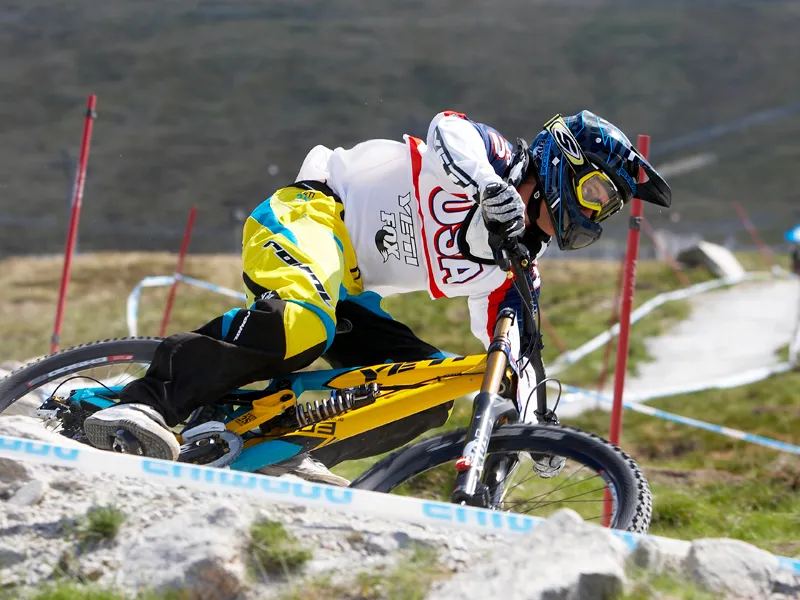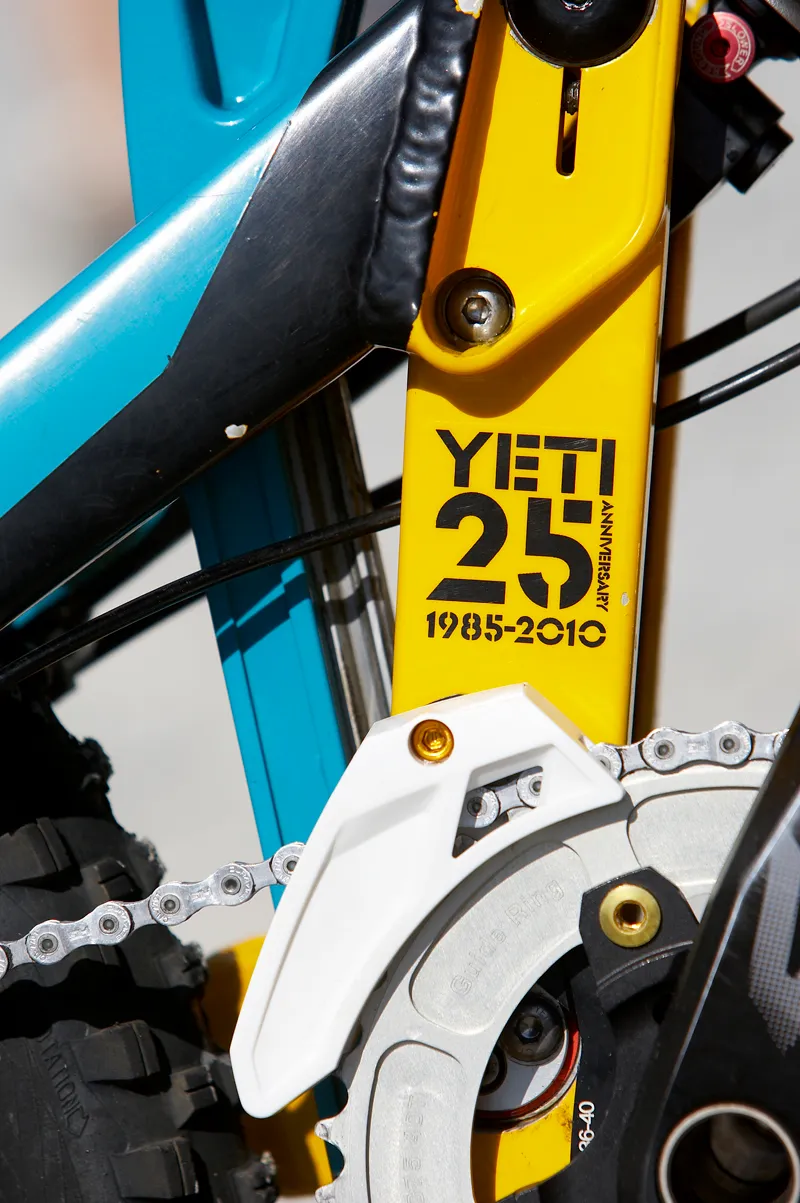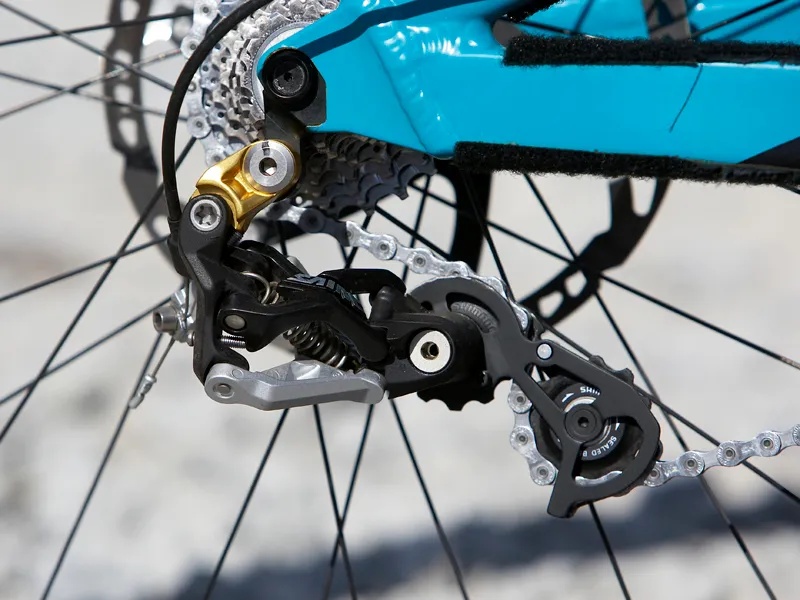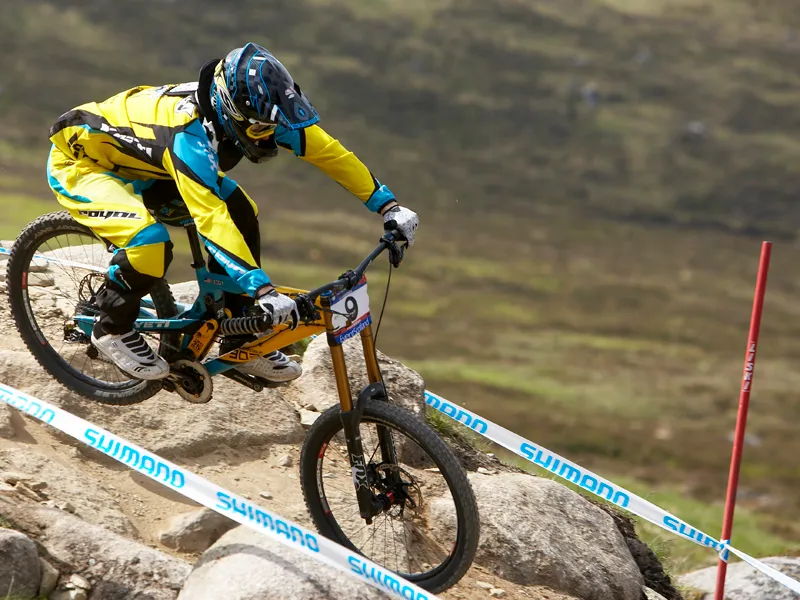To say there’s a lot of hype around Californian Aaron Gwin is an understatement. Over the past 10 years, an unprecedented lack of podium winning racers have emerged from the American downhill ranks. US race fans have been crying out for success and it just hasn't come – until now, that is.
Currently lying fourth in the World Cup standings (after five out of six rounds), and tipped by many pundits as a not-so-dark-horse contender for victory at the 2010 World Championships in Mont-Sainte-Anne, Canada, the 21-year-old was always going to be riding a pretty special bike. We chatted to Yeti/Fox Racing Shox team mechanic Shaun Hughes to get the lowdown.
Like most new race bikes these days, details of the 303DH Factory Team Edition appeared online way before its official launch. Carefully staged shots of the bike in the bare metal appeared all over the place before it finally broke cover at the Sea Otter Classic back at the start of the 2010 season.
Designed to help celebrate 25 years of the iconic Durango-based brand, the new race rig wears a custom yellow and turquoise paint scheme. The iconic colourway is reminiscent of the Yetis of old and had bike geeks twitching with excitement from the moment the bikes were wheeled out of the team truck along with the squad's matching race kit. According to Shaun and other Yeti sources, there are no plans to put the clothing into production.
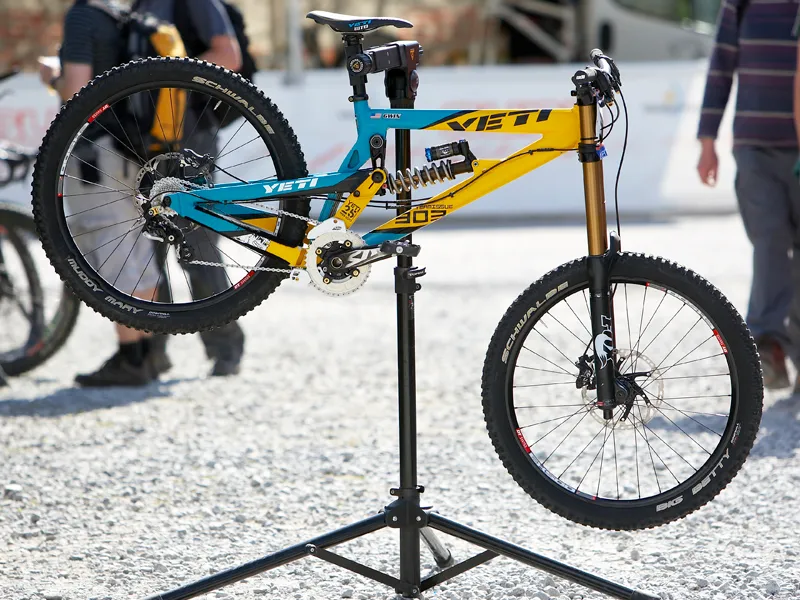
Aaron Gwin's race rig sports Yeti's iconic yellow and turquoise paint scheme
Replacing the innovative Linear Rail-operated 303 was always going to be a tall order. Contrary to speculation, the rail remains on the 303DH, albeit in a much smaller guise. Instead of the two rails the old 303 used, the new bike has a single rail at the bottom end of the shock. It’s hidden away at the base of the seat tube and features a newly designed car with an inbuilt cowl and greaseport to keep things running smooth.
The rail controls the rate at which the shock works. To get a similar rate with a linkage, overly long links would be required. Instead, Yeti can link the shock lower in the frame for greater stability. They claim this also dramatically decreases damaging shock rotation. The adjustability found on the 303's sibling R-DH frame is absent, but we have heard grumblings that some adjustability may be built into production frames.
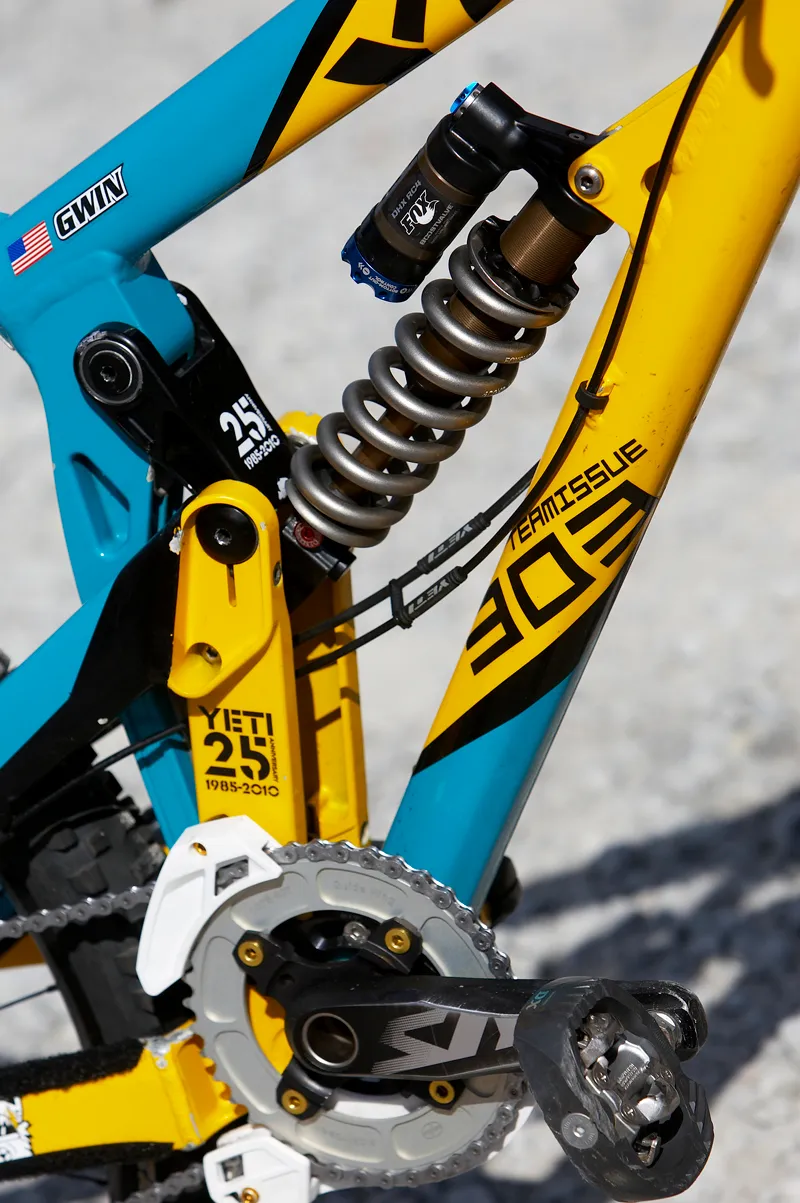
A linear rail is used to control the 303DH's shock rate
At the Fort William World Cup, Gwin’s bike weighed in at 41lb. This changes depending on setup but, although light, snubs the current trend for ultra lightweight downhill machinery. “The bike is designed and built to work run after run, year after year, and that’s the way it should be,” Shaun says.
Fox Racing Shox are a massive part of the Yeti racing team setup and as you’d expect, Gwinny’s fork is pretty trick. Aaron runs an as-yet-unreleased 2011 Fox 40 with custom valving and one-off Kashima coated parts. This special lightweight, ultra smooth material is used extensively in motorsport suspension and is used on the shafts, main body and reservoirs of Gwin’s forks. His rear shock is also custom-valved to his specs.
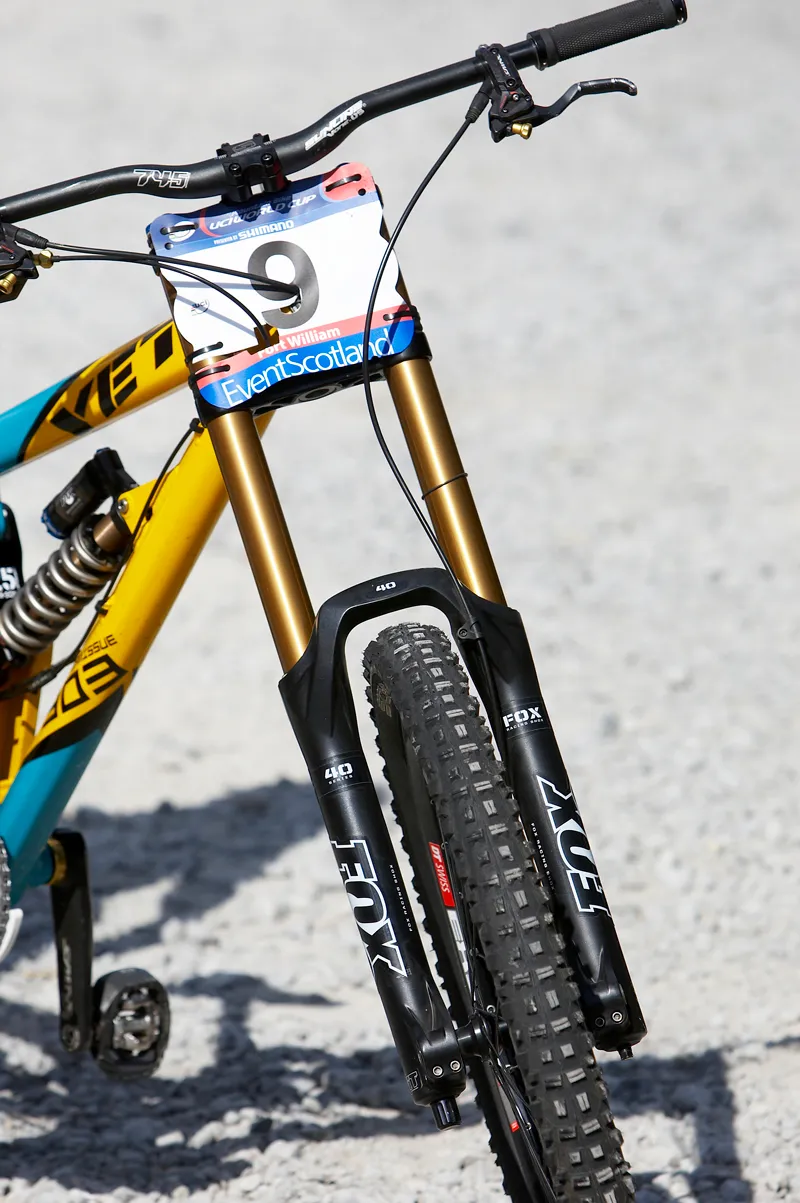
Gwin's Fox 40 fork boasts custom valving and one-off Kashima coated parts
The ‘stock’ team wheelset comprises of DT Swiss 240 front hubs and 340 rear hubs laced to 500 rims. Gwin swaps to bladed spokes and ceramic hubs for his race runs because they offer up a touch more speedy acceleration. Coating the specialist rolling-stock is rubber from relatively new sponsors Schwalbe. The team are testing a new compound called First Ride which is a lot softer than the regular compound and ideal for the typically cooler European World Cup races.
The Yeti team are also the first factory team to run the new Chris King Inset headset. The soon-to-be-production headset offers the usual high quality King performance but with a zero stack height – ideal as both Gwin and team-mate Joey Schusler prefer low front ends.
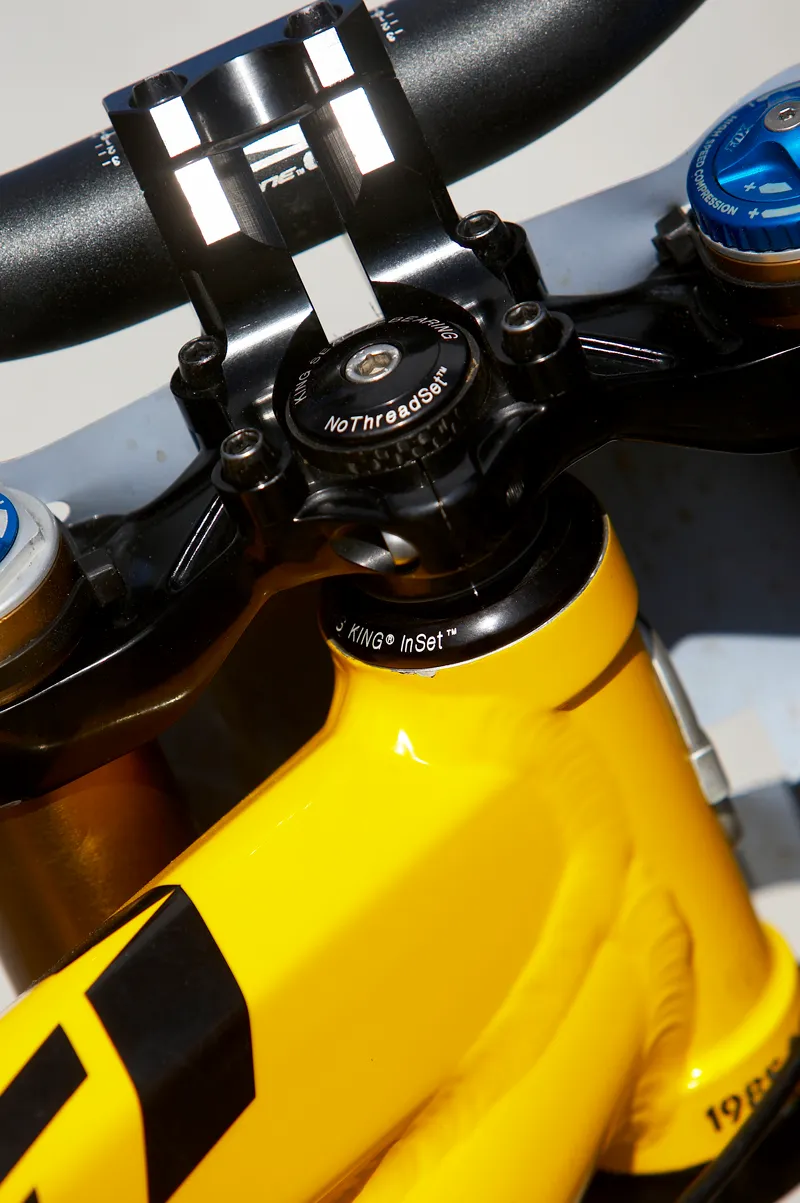
Yeti are the first factory team to run the new zero-stack Chris King Inset headset
Shimano have developed a bespoke rear mech cage for the 303DH which is similar to the standard Saint number but with some slight tweaks to the geometry to provide improved shifting performance through tricky rough sections. This too is pro-only and won’t make production. The rest of the transmission is taken care of by the Japanese conglomerate’s Saint range. Gwin’s brakes feel more like Formula One stoppers, with all the power arriving quickly and at once.
The big question is when exactly the 303DH will move from being an exclusive race machine to being available to the public. “Everyone has been asking me that!” Shaun winces. “The truth is that I don’t know. Yeti have a good approach to things – when it’s ready, it’s ready. The boys are very happy with it, a few little tweaks in how it’s manufactured and we should be there. Two pretty horrible World Cup courses in and we haven’t encountered any mechanical issues so far – it’s come out of them with flying colours.”
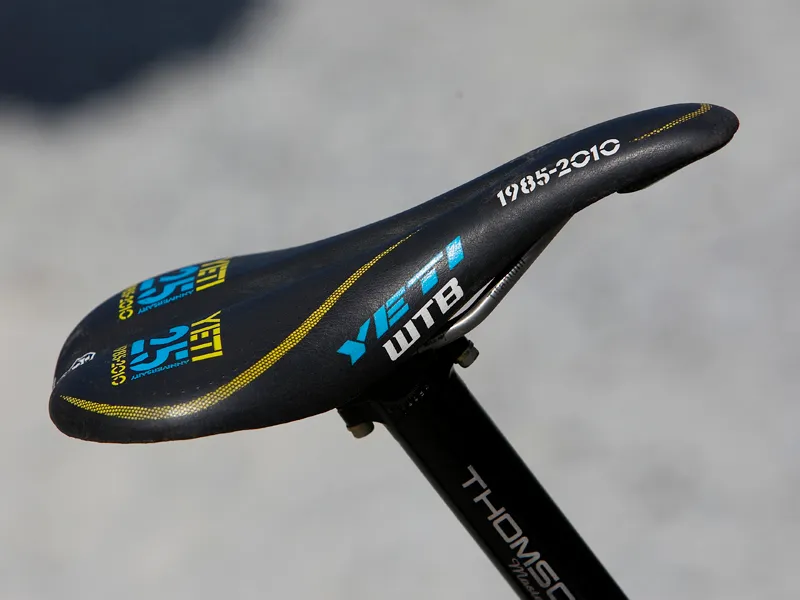
Even the saddle has been customised to celebrate Yeti's 25th anniversary
The new bike is so eagerly anticipated that Shaun told us about one ardent Yeti fan who had just bought a 303 and decided to leave it un-opened at the factory as a down payment on one of the first new frames when they arrive.
Yeti are one of those brands that's aspirational. The look, the heritage and the still unwritten history which riders like Gwin and Schusler look to add to on every race run is all part of the iconic image. America has been striving for a new World Cup hero and with a bike this special underneath him, who’s to say it can’t be Aaron Gwin?
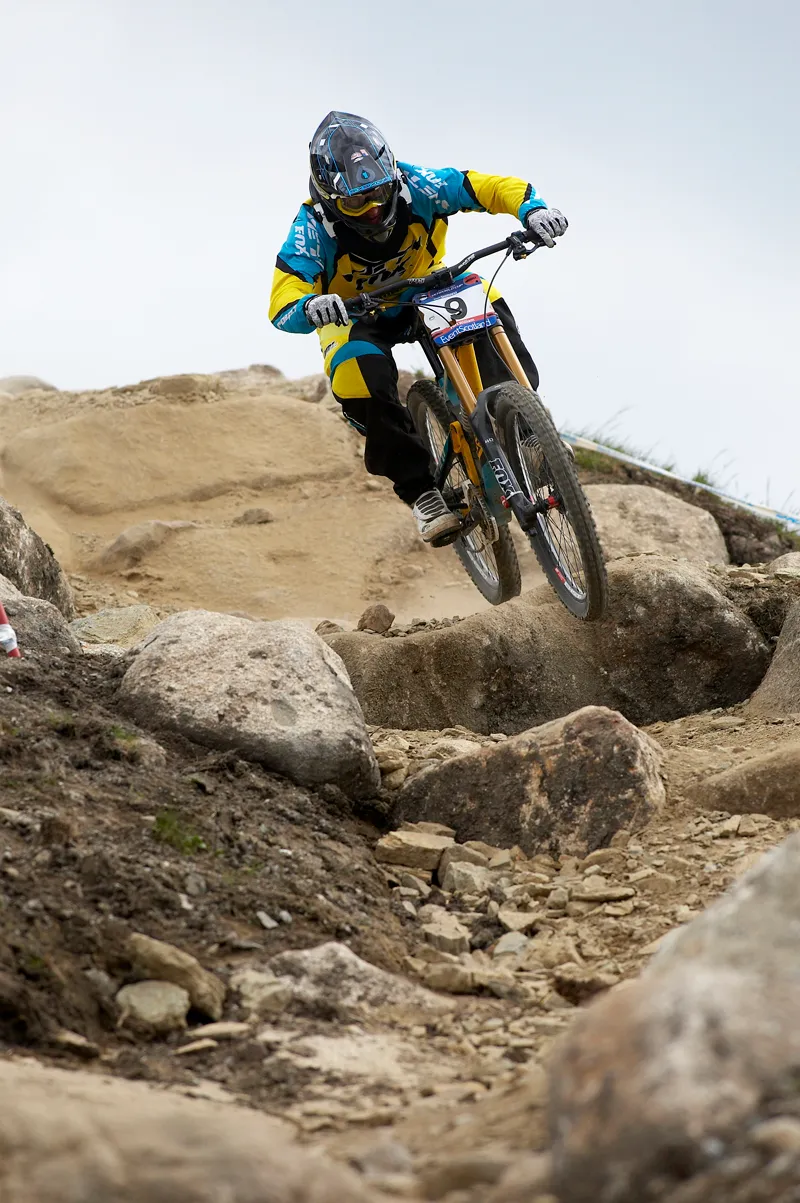
Gwin is hotly tipped to take the top step on a World Cup podium soon
